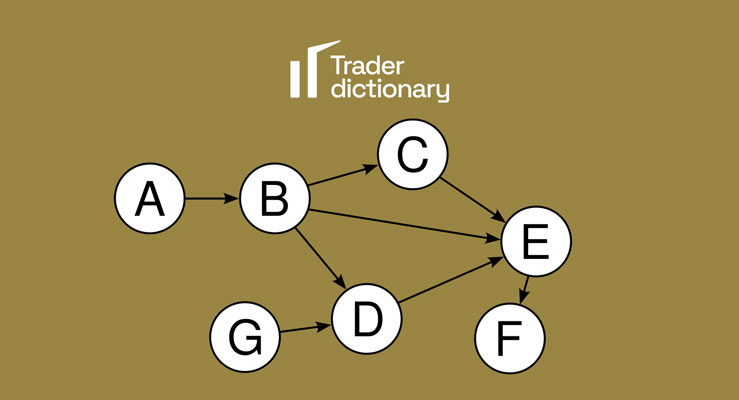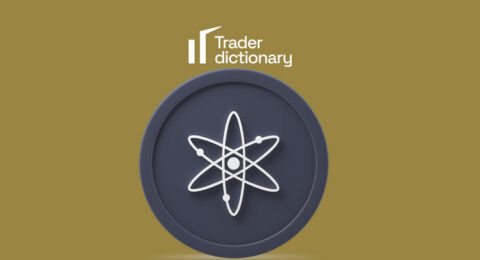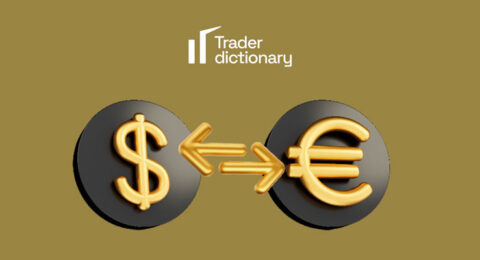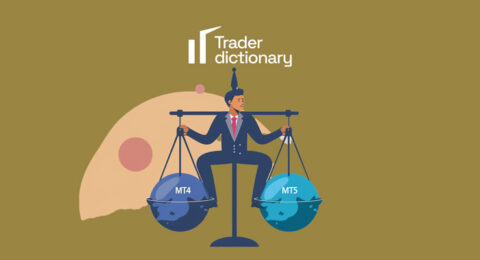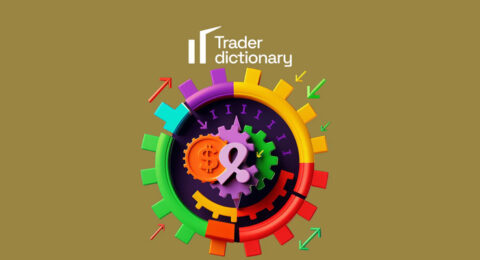In this article, you will become familiar with the basic definition of Dag – a term no longer foreign in fields such as blockchain technology, project management, and computer science. By using easy-to-understand and accessible language, we will guide you through practical examples, helping you recognize the importance and application potential of Dag in various industries.
But we don’t stop there; the article also shares how modern businesses are applying Dag to optimize work processes, enhance efficiency, and ensure transparency in operations. Whether you are new to this concept or already have experience, “What is Dag, Examples, and Applications” promises to provide deep and practical insights into a tool becoming increasingly indispensable in the digital era.
Let’s start this journey of discovery together and find out how Dag can become a breakthrough for your business development.
What is Dag?
Dag, have you ever wondered where this concept fits in the big picture of information technology? Yes, we’re talking about one of the most basic components that perhaps you’ve heard of but might not fully understand its significance. So, what is Dag? Simply put, Dag – short for Directed Acyclic Graph – is a unique data structure that contains no cycles, with nodes arranged in a specific direction.
Imagine Dag as a roadmap, where each stop is a node, and each road leads one way from one point to another, never returning to the starting point. This creates a perfect model for simulating ordered processes, from project management to transaction execution in blockchain, where complexity and the need to avoid repetition are extremely important.
Not just a theoretical structure, Dag truly lies at the heart of many modern applications. It makes data processing more flexible, enhancing transparency and efficiency in complex systems. That’s why, when you encounter this concept, you’ll find it not only limited to theory but also widely applied, from computer science to financial technology.
Overall, Dag is not just a dry concept but also opens up a new world of opportunities and applications in reality. It’s an indispensable part of the big picture of modern technology, a powerful tool that helps us solve complex challenges by creating smart and effective solutions.
How Does Dag Work?
Now, let’s talk about how Dag operates. For those who are exploring, don’t worry, I’ll try to explain it in the simplest way possible. Looking at the structure of Dag, you will see nodes connected to each other by directed edges. The key point here is that no loops are created, meaning you can’t start from a node and follow a path that eventually leads back to the same node.
Think of it as a continuous flow, always moving forward without ever turning back. In such an environment, data can be processed efficiently, with each step being organized and directed. This is why Dag is favored in applications requiring complex and distributed data processing, like blockchain or project management.
A typical example? Think about transactions in a Dag-based blockchain system. Each transaction is confirmed by other transactions, creating a network of confirmed transactions without needing a central block network. This not only speeds up processing but also enhances security and transparency.
Advantages and Disadvantages of Dag
Looking at Dag, or Directed Acyclic Graph, I can’t help but think about the two sides of a coin. Yes, it brings a range of undeniable benefits, but it’s also impossible not to mention its limitations. Let’s delve deeper into these advantages and disadvantages, shall we?
On the advantage side, Dag truly is a game-changer in many areas. First, it allows for quick and flexible data processing. You see, in a Dag-based system, data is processed in parallel, rather than sequentially. This helps speed up processing and reduce waiting times. Moreover, the flexibility of Dag also allows it to be easily scalable, suitable for large-scale applications.
However, nothing is perfect. One of the major drawbacks of Dag is its complexity in design and management. For newcomers, understanding and applying Dag can be challenging. Additionally, maintaining data consistency in such a complex system is also a significant challenge.
I find that despite its limitations, the benefits Dag offers are truly worth considering. That’s why it’s becoming increasingly popular, especially in fields that require quick and efficient data processing. What about you? I believe everyone will have their own perspective on Dag, and that’s the beauty of technology – there’s always room for a diversity of opinions and improvements.
What is Dag Used For?
One of the primary purposes Dag is used for is in the field of blockchain and cryptocurrencies. With its ability to process transactions in parallel rather than sequentially, Dag significantly improves transaction speed and scalability. This opens up a new future for blockchain scalability, addressing some critical issues such as slow transaction speeds and high costs.
But Dag’s role doesn’t stop there; it also plays a crucial part in developing distributed systems and IoT (Internet of Things) applications. In an increasingly connected world, managing and processing large amounts of data from billions of devices becomes imperative. Dag, with its ability to process data flexibly and efficiently, is the ideal solution to this challenge.
I’m genuinely excited about Dag’s potential to support the management of large and complex data sets. From optimizing data storage to improving work processes, Dag opens up a new era for efficient and secure data management.
It’s a promising world when Dag begins to be widely applied, from the financial industry, healthcare to manufacturing, and beyond. I firmly believe that Dag will continue to be one of the pioneering technologies, changing how we interact with the world around us. What about you? Share your thoughts and feelings about Dag!
Applications of Dag in the Cryptocurrency Market
Dag, or Directed Acyclic Graph, has truly changed how we view blockchain and cryptocurrency technology. The cryptocurrency world, in general, has witnessed a significant leap forward thanks to this innovation.
In the context where traditional blockchains sometimes face issues with scalability and transaction speed, Dag has emerged as a promising solution. You know, with its mechanism, Dag helps make transaction processing faster than ever, without the need to wait for confirmation from blocks as in traditional blockchains.
Moreover, applying Dag in cryptocurrencies opens up opportunities for developing new projects with high requirements for scalability and transaction speed. Businesses and organizations can build instant payment and transaction applications without worrying about delays or network congestion.
The potential that Dag opens up for the cryptocurrency market is immense. It not only addresses the current limitations but also opens up a new future where cryptocurrency transactions become faster, more convenient, and cost-effective than ever. Below are 2 typical applications:
NANO
This is a classic example of how Dag has revolutionized the cryptocurrency market.
- Instant Transactions: NANO uses Dag technology to offer instant transactions, eliminating long confirmation wait times for users.
- No Transaction Fees: What sets NANO apart is the absence of transaction fees, thanks to the Dag mechanism that helps minimize costs.
- Scalable: With Dag, NANO can flexibly scale to meet high transaction demands without network congestion issues.
- High Security: The distributed nature of Dag, coupled with carefully designed security mechanisms, makes NANO one of the safest cryptocurrencies available today.
- Environmentally Friendly: Unlike cryptocurrencies using the energy-intensive Proof of Work (PoW) mechanism, NANO through Dag significantly reduces power consumption, making it more environmentally friendly.
- Easy Integration: NANO’s Dag technology allows it to be easily integrated into existing payment systems, expanding its application in real life.
- Optimal User Experience: With advantages in speed and no transaction fees, NANO offers users the best experience, free from the common issues found in other cryptocurrencies.
NANO, by applying Dag, has truly created a breakthrough in the cryptocurrency market, not just technically but also in terms of the environment and user experience. I see this as a classic example of the progress new technology brings, and surely, it will continue to evolve in the future.
IOTA
IOTA – A significant step in applying this technology into practice.
- Optimizing Transactions for the Internet of Things (IoT): IOTA, through Dag, has established a solid foundation for instant communication and payment between IoT devices, boosting the development of the machine economy.
- Feeless Transactions: IOTA’s highlight is its ability to conduct transactions without any fees, increasing the feasibility and efficiency of deploying large-scale IoT projects.
- High Scalability: Thanks to the Dag mechanism, IOTA can handle a large number of transactions without slowing down the system, crucial in an IoT environment with a vast number of devices and transactions.
- Data Security: IOTA leverages Dag to ensure secure data transmission, allowing safe data exchange between devices without the fear of hacking or data theft.
- Instant Transactions: With the Dag mechanism, transactions on IOTA are confirmed almost instantly, significantly reducing waiting times compared to traditional blockchain systems.
- Easy Integration: IOTA is designed for easy integration with existing IoT systems and applications, enhancing the interaction and efficiency of projects.
- Energy Saving: Compared to blockchain systems based on the Proof of Work mechanism, IOTA uses less energy, aligning with sustainable development goals and being environmentally friendly.
IOTA proves that, with the help of Dag technology, the cryptocurrency space can reach far beyond just payments or transactions, but also towards creating solutions
The Difference Between Dag and Blockchain
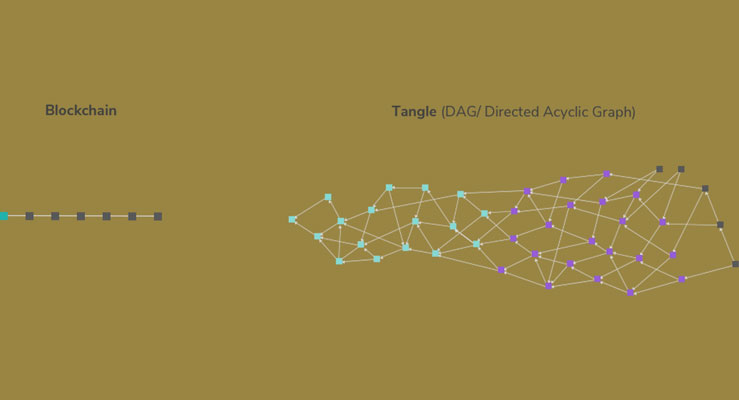
In the world of cryptocurrency and blockchain technology, Dag (Directed Acyclic Graph) and blockchain are both widely used data structures, but they offer significantly different features and benefits.
At its core, blockchain is a chain of linked blocks containing transaction information, where each new block is added to the end of the chain, creating an immutable structure. On the other hand, Dag doesn’t use blocks. Instead, it relies on a graph structure, where each transaction directly confirms one or more previous transactions, creating a network of interconnected transactions.
Speed and Scale: Dag is often praised for its high scalability and quick transaction processing speed. Meanwhile, blockchain, especially those using the Proof of Work consensus mechanism, often faces scalability and speed issues.
Consensus Mechanism: Blockchain uses consensus mechanisms like Proof of Work or Proof of Stake to add new blocks to the chain. Dag, with its graph structure, allows each transaction to confirm another, eliminating the need for miners or specific consensus participants.
Security and Decentralization: Although both technologies aim to create a decentralized and secure system, their approaches differ. Blockchain relies on the durability of the block chain, while Dag utilizes its complex graph structure to prevent attacks.
Transaction Fees: A notable advantage of Dag is the ability to conduct transactions without fees, or with very low fees, thanks to its unique consensus mechanism. This presents a clear benefit over some blockchains, where transaction fees can become significant during network congestion.
Thus, each technology, from blockchain to Dag, has its distinct characteristics and benefits, suitable for different applications and needs. Understanding how they work and the differences between them will help us choose the most appropriate technology for future projects.
Can Dag Replace Blockchain?
In the ever-evolving landscape of cryptocurrency and blockchain technology, the question “Can Dag Replace Blockchain?” has become a hot topic. Each technology has its features and strengths, meeting specific needs in the tech field.
Firstly, it’s important to acknowledge that Dag and Blockchain both hold significant positions and roles in today’s digital world. Blockchain, with its consensus mechanism and secure block chain, has laid a solid foundation for cryptocurrency transactions and decentralized applications. However, issues with scalability and transaction speed have led the community to seek alternative or complementary solutions.
This is where Dag shines. With its flexible data structure and ability to process transactions in parallel, Dag offers a sensible solution to scalability and transaction speed issues. Dag allows for quick transactions without waiting for network confirmation, significantly reducing time and costs per transaction.
However, whether Dag can entirely replace Blockchain is a complex question. Each technology has its strengths and weaknesses and is suitable for different applications. For example, Blockchain still has an advantage in creating an immutable and highly secure ledger system, while Dag is more suited to applications requiring high transaction speed and low transaction fees.
Overall, Dag is not a perfect replacement for Blockchain but a valuable complement, diversifying and enhancing the capabilities of distributed ledger technology. In the future, the combination of Dag and Blockchain could open up new possibilities, creating stronger and more efficient distributed ledger solutions.
The Potential for Dag Development in the Future
Looking to the future, the development potential of Dag, or Directed Acyclic Graph, is truly limitless. Dag is opening a new horizon for distributed technology, with the ability to address many of Blockchain’s traditional limitations – such as scalability and transaction speed issues. I feel that Dag is not just a step forward in the cryptocurrency field but can also be widely applied in various other industries, from supply chain management to the Internet of Things (IoT), and even in payment systems and data management.
With its high scalability and rapid processing speed, Dag can support millions of transactions per second without worrying about delays or network congestion. This makes it an ideal choice for applications requiring large data processing and quick response times, like IoT projects where devices need to continuously and instantly communicate and exchange information.
Furthermore, Dag also brings benefits in terms of security and transparency. Its acyclic structure ensures that each transaction can only be added once and cannot be altered, helping to prevent fraud and enhance data integrity.
I think, with these standout features, Dag will not only continue to grow strongly in the financial field but also expand its influence to other areas, turning it into an indispensable technology in the digital society of the future. It’s a journey full of promise, and I can’t help but feel excited about what Dag can achieve next.
Conclusion
Dag, with its unique structure and superior capabilities compared to traditional blockchain, opens up a promising future for distributed technology. Through this article, I hope you have gained deeper insights into Dag and feel the immense potential it brings in improving and optimizing today’s technology systems.
Whether you are a technology developer, an investor, or simply a tech enthusiast looking to learn more, Dag is certainly a field worth investing time and effort in. With solid progress, Dag is not just a potential technology solution but also an opportunity for us to make positive, sustainable changes for the future. I truly believe in the power of Dag and look forward to its strong development in the coming times.



